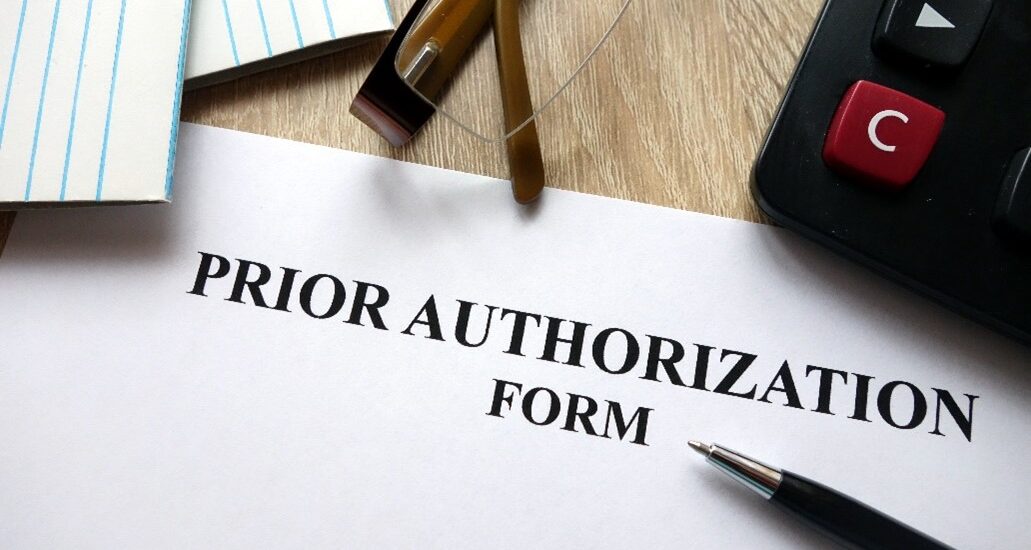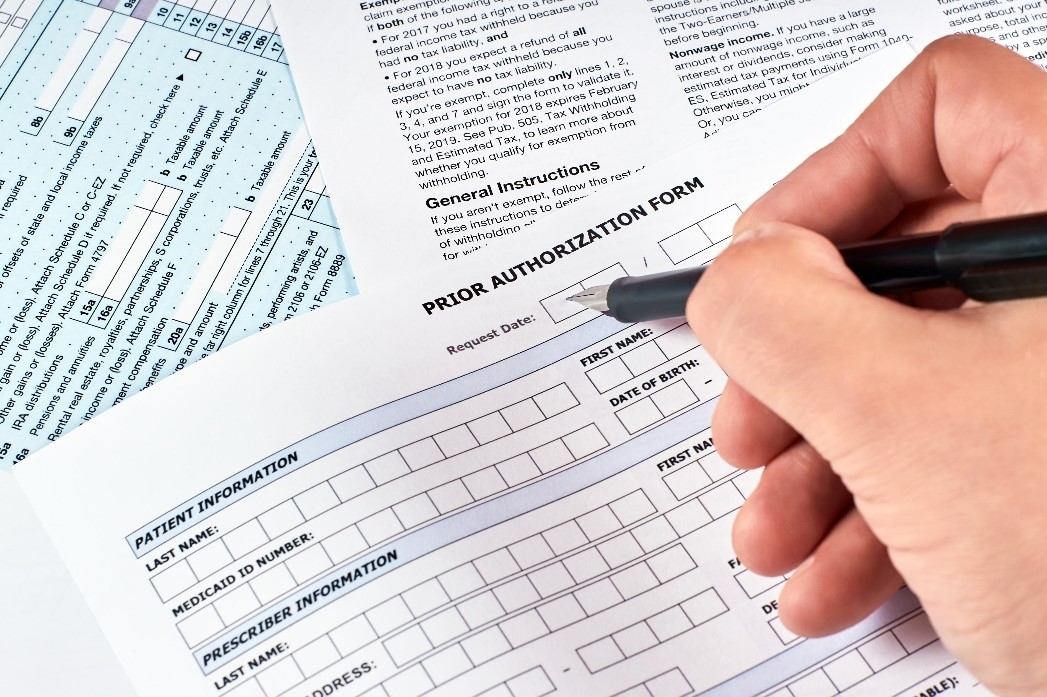- August 26, 2024
- Posted by: GMAS Team
- Category: Blog

Navigating the healthcare system and obtaining necessary medications often involves more than just handing a prescription to your pharmacist. In many cases, your doctor may need to seek approval from your insurance company before you can receive certain medications. This process, known as prior authorization, ensures that treatments are appropriate and cost-effective. However, it can also lead to delays in receiving your medication. This blog will explain how the process works, why it’s necessary, and how long it typically takes, as well as offer tips on expediting the process.
What is Prior Authorization?
It is a process that health insurance companies use to decide if they will cover a prescribed treatment or medication. The goal is to ensure that the prescribed care is medically necessary and cost-effective. Here’s a breakdown of the typical steps in the process:
- Prescription Issuance: Your healthcare provider prescribes a medication.
- PA Inquiry: The provider submits a preauthorization request to insurance company.
- Assessment: The insurance company reviews the request against medical guidelines and policy criteria.
- Decision: The insurance company either approves, denies, or asks for more information.
- Notification: The decision is communicated to both the healthcare provider and the patient.
Why is it Necessary for Some Medications?
Insurance companies require preauthorization for various reasons:
- Cost Management: They review expensive medications to ensure they are being used appropriately.
- Safety and Effectiveness: Ensures that the prescribed medication is necessary and the best option for the patient.
- Abuse Prevention: Helps prevent overuse or misuse of certain medications, particularly those with a high potential for addiction.
Factors Affecting the Duration of Prior Authorization.
Several factors can influence how long the process takes:
- Complexity of Medication: Specialty drugs or those with higher costs may require more thorough evaluation before approval.
- Insurance Company Policies: Each insurance company has its own procedures and timelines for handling preauthorization requests.
- Documentation Accuracy: Incomplete or missing paperwork can cause significant delays in the approval process.
- Use of Technology: Utilizing electronic prior authorization (ePA) systems instead of manual methods can greatly expedite approval times.
- Communication: Effective communication among healthcare providers, pharmacies, and insurers is crucial in minimizing delays.
Typical Time Frames for Prior Authorization
While the time it takes to get preauthorization can vary, here are some general guidelines:
- Standard Requests: For most medications, approval typically takes between one and three days after the request is submitted.
- Urgent Requests: In cases where the medication is urgently needed, insurance companies may expedite the process and provide a decision within 24 hours.
- Complex Cases: For medications that require more detailed information or for cases that are more complicated, the process can take anywhere from several days to over a week.
- Appeals: If the initial request is denied and an appeal is necessary, the process can extend to several weeks depending on the insurer’s review process.

Steps to Expedite the Process
While patients and healthcare providers may not have control over every aspect of the preauthorization process, there are steps that can help speed it up:
- Ensure Complete Documentation: Before submitting a request, providers should ensure that all necessary documents, including medical records and justification for the medication, are included.
- Maintain Regular Communication: Staying in regular contact with the insurance company can help identify and resolve any issues or requests for additional information quickly.
- Utilize ePA Systems: Electronic preauthorization systems can reduce paperwork and significantly cut down wait times.
- Open Communication: Keeping the lines of communication open between patients, providers, and insurers can help address any questions or concerns promptly.
How Technology is Streamlining the Process
The implementation of electronic prior authorization (ePA) systems has transformed the efficiency of the process. Here’s how technology is making a significant impact:
- Automated Submissions: ePA systems can automatically populate patient and medication information, reducing errors and ensuring all required data is included.
- Real-Time Decisions: Some ePA platforms can provide instant or near-instant decisions for certain medications, significantly reducing waiting times.
- EHR Integration: Integration with electronic health records (EHR) allows for seamless sharing of patient data, speeding up the review process.
- Tracking and Alerts: ePA systems often include tracking features and automatic alerts, keeping healthcare providers informed about the status of their requests.
Challenges and Limitations
Despite its benefits for cost control and ensuring appropriate medication use, prior authorization presents significant challenges:
- Time-Consuming for Providers: Healthcare providers often spend substantial time completing paperwork and processing preauthorization requests, detracting from time spent on patient care.
- Delays in Treatment: Approval delays can disrupt treatment plans, especially for patients with serious or chronic conditions.
- Inconsistent Criteria: Variations in approval criteria and processes among insurers contribute to confusion and inefficiencies.
- Patient Frustration: Patients often experience frustration during the preauthorization process, which can delay their access to necessary medications and negatively impact their health.
Improving the Prior Authorization Process
Improving the process requires collaboration among all parties involved:
- Policy Simplification: Proposing changes to simplify preauthorization requirements and reduce administrative burdens can enhance efficiency in healthcare settings.
- Standardization: Standardizing criteria and processes across insurance companies would reduce confusion and streamline procedures for healthcare providers.
- Education and Training: Educating providers on best practices for submitting prior authorization requests and encouraging the use of ePA systems can improve workflow and patient care coordination.
- Patient Empowerment: Educating patients on their insurance coverage and requirements can expedite the process and ensure timely access to medications.
The Future of Prior Authorization
Looking ahead, the future of preauthorization holds promise with advancements in technology and policy changes:
- AI and Machine Learning: Advanced algorithms and machine learning are expected to enhance the process by predicting patient outcomes and streamlining evaluations.
- Interoperability: Improved systems for secure and transparent sharing of patient data among healthcare providers, insurers, and pharmacies are on the horizon.
- Legislative Reforms: Ongoing legislative efforts aim to simplify processes for providers, ensuring that patients receive their medications in a timely manner.
- Enhanced Collaboration: Greater collaboration among healthcare providers, insurers, and patients is making the process more efficient, with a stronger focus on meeting patient needs.
Prior authorization is a critical aspect of managing healthcare resources, but it can also lead to delays and frustration for both patients and providers. Understanding the factors that influence the time required for preauthorization and adopting strategies to expedite the process can help mitigate these challenges. As technology advances and policies evolve, the process is likely to become more efficient, allowing patients to receive the medications they need more quickly. In the meantime, staying informed, advocating for policy changes, and utilizing available tools can help navigate the complexities and ensure timely access to care.
